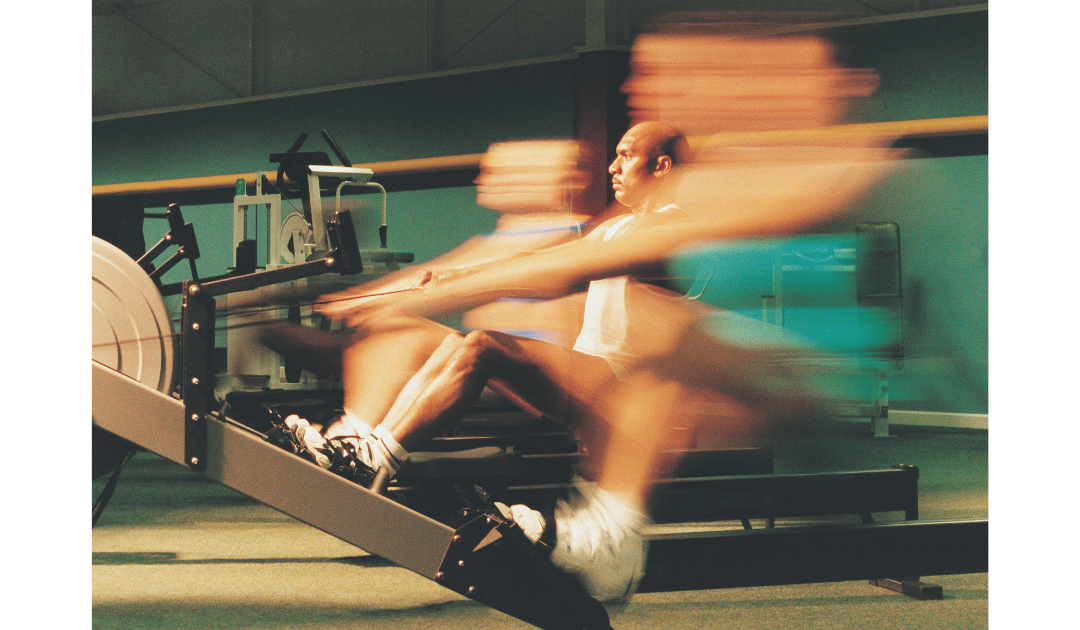Back in June 2020, I discussed the benefits of 80/20 Polarised Training and how to implement the polarised sessions into a rowing training programme. David Harris, a masters rower from Washington DC contacted me after reading the blog. He wanted to incorporate a polarised model into his training regime.
Last month, David sent me the news of his new 500m rowing personal best on the Concept2 rower, at the age of 51!
David is currently the fastest man in the world in his age group (50-54) for 500 metres covering the distance in a blistering 1 minute, 21.3 seconds.
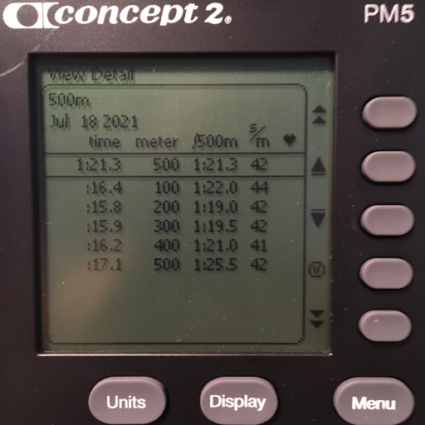
David’s monitor on the Concept2 rower displaying his impressive 500m time
*UPDATE*
SEPTEMBER 2021 CLIENT OF THE MONTH – NEW PERSONAL BEST ACHIEVED THIS MONTH – 1 MINUTE 19.9 SECONDS! PHENOMENAL.
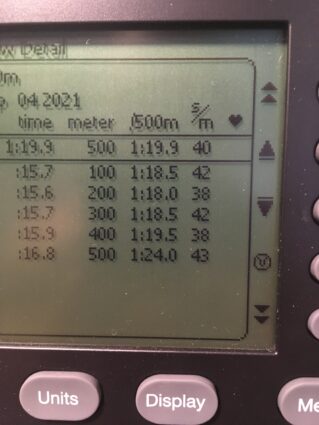
UPDATE – NEW PB 1 MINUTE 19.9 SECONDS FOR 500M ON THE CONCEPT2 ROWER AT 51 YEARS OF AGE
Previously, David’s personal best over this relatively short distance was 1 minute 25.2 seconds. After implementing a 80/20 polarised programme, David dropped his time to 1 minute 22.6 seconds. And recently, he improved by a further 1.3 seconds.
David’s improvement in wattage is an incredible 86 watts in 12 months over 500 metres and is the September 2021 client of the month.
As David’s 500m shows, 80/20 polarised training is not only recommended for long distance sports such as marathon running, ironman triathlons and cycling, but is ideal for anything lasting more than 60 seconds.
The Energy Systems
In high intensity exercise lasting fewer than 10 seconds (think 100m track sprint and lifting weights), the body primarily uses the anaerobic system – Adenosine Triphosphate-Creatine Phosphate (ATP-CP) which provides instant powerful energy. The body does this by breaking down two high-energy phosphates which are stored in muscles.
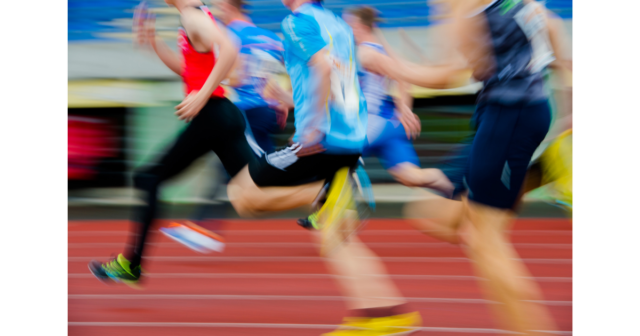
The ATP-CP system predominantly used in 100m track races
After about 10 seconds, the ATP-CP system is depleted and the glycolysis process takes over in which glucose is broken down into a substance called pyruvate through a series of steps to produce energy.
During glycolysis, when oxygen is limited, the body temporary converts pyruvate into a substance called lactate. Lactate allows glucose breakdown and thus energy production.
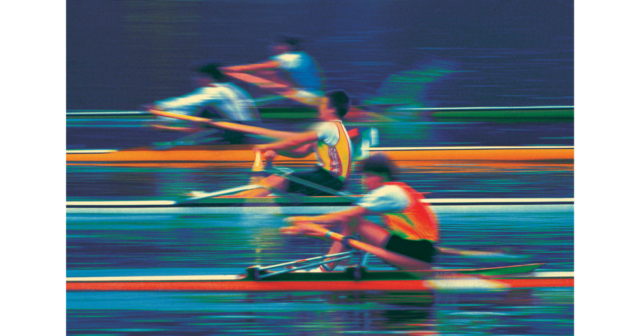
Rowers in the first 3 minutes using the glycolytic system to break down stored glycogen to create ATP
This method of high intensity anaerobic energy production continues for about 3 minutes during which time lactate can accumulate to high levels. A side effect of high lactate levels is an increase in the acidity of the muscles (lactic acid). This interferes with the breakdown and the body naturally slows down to allow aerobic metabolism to produce energy.
Polarised training to be faster
Polarised training allows the development of the aerobic system (80%) without fatiguing the body for the high intensity sessions (20%). This creates a bigger engine for all systems to operate in.
And importantly, polarised training avoids the ‘grey zone‘. That sweet spot long distance session which leaves you feeling depleted.
Remember, energy systems are not binary, as in 100% aerobic or 100% anaerobic. Energy systems operate simultaneously and the degree to which contributes to the level of output.
So, get the calculator out, work out the training zones and enjoy the process of developing your energy systems. You may even surprise yourself with a personal best.

